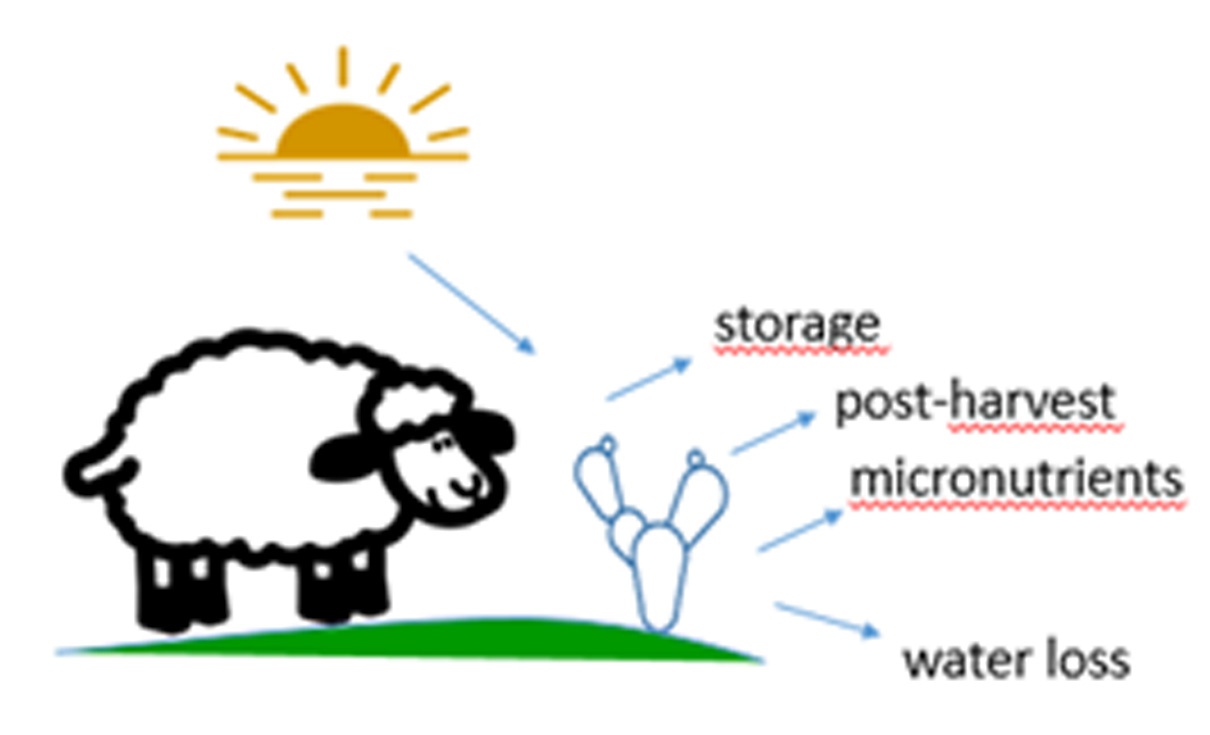Water loss and chemical composition of cactus pear genotypes submitted to post-harvest storage periods
DOI:
https://doi.org/10.48162/rev.39.059Keywords:
conservation, forage, Nopalea cochinillifera, Opuntia tunaAbstract
The objective of this study was to evaluate water loss and chemical composition of cactus pear genotypes submitted to post-harvest storage periods. The experimental design adopted was a the completely randomized, in a 3 × 5 factorial arrangement, with three cactus pear genotypes and five storage periods, and ten replications. The cactus pear genotypes [Doce, Baiana and Orelha de Elefante Mexicana (OEM)] were harvested after 2 years of cultivation under rainfed conditions, and stored in a ventilated shed (0, 15, 30, 45 and 60 days). The genotype Baiana showed greater water reduction in the stored cladodes when compared to the other genotypes. All cactus pear genotypes showed reduction in crude protein and carbohydrates in the storage period of 60 days. There were no losses of nutrients, dry matter and ether extract during the storage periods for the genotype Doce. There was increase in the fiber content of the cladodes of all stored genotypes. During the storage period of the cladodes of all genotypes, there was reduction in the contents of Ca, Mg and Cu. The cactus pear genotypes Doce and OEM can be stored for up to 60 days after harvest.
Highlights:
• Cactus is also considered a strategic forage reserve and, in this case, the frequency of cutting can vary according to the producer's needs and weather conditions.
• Post-harvest storage can be an alternative to reduce costs, as well as transporting the material.
• The variety Doce Baiana showed greater water loss in relation to the other varieties.
Downloads

Downloads
Published
How to Cite
Issue
Section
License
Copyright (c) 2018 Revista de la Facultad de Ciencias Agrarias UNCuyo

This work is licensed under a Creative Commons Attribution-NonCommercial-ShareAlike 3.0 Unported License.
Aquellos autores/as que tengan publicaciones con esta revista, aceptan las Políticas Editoriales.










.jpg)




